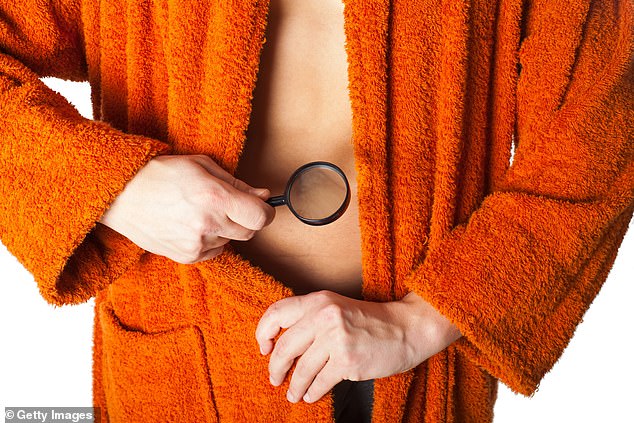A trial is underway to investigate whether a one-time Botox shot can improve erectile dysfunction symptoms for men with diabetes – who tend to respond less well to standard treatments for the condition.
Erectile dysfunction (ED), the inability to achieve and maintain an erection, affects half of men between the ages of 40 and 70 to some degree.
Causes include narrowing of the blood vessels that supply the penis, which can be related to heart disease and high cholesterol.
Men with diabetes are more at risk of DM as their bodies cannot control blood sugar levels effectively – high blood sugar levels can damage the blood vessels and nerves that help produce an erection.
Viagra-type drugs (known as PDE5 inhibitors) treat ED by increasing levels of nitric oxide, which dilates blood vessels to allow better blood flow. Results last up to four hours.
Erectile dysfunction affects half of men between the ages of 40 and 70 to some degree
But while they help in about 70 percent of cases, they are not suitable for men taking nitrates (medicines for angina), for example, or for those with liver problems or who have recently had a stroke.
Men in the new trial include those with severe ED or those for whom Viagra-type drugs have not worked.
Botulinum toxin (the active compound found in Botox) blocks the signals from the nerves that cause muscles to contract.
Previous research has shown that it can help with ED as it relaxes the muscles around the blood vessels that supply the penis, helping to improve blood flow.
It also prevents the release of norepinephrine, a chemical messenger that reduces blood flow.
The 32 men in the new trial will receive a single injection of botulinum toxin and then take a pill containing 5 mg of tadalafil, a PDE5 inhibitor, daily for three months.
This follows a recent trial of 216 men, most of whom had not responded to Viagra-like drugs. At the start of this trial, the men were given two Botox injections, one into each of the two spongy chambers that run along the length of the penis and fill with blood to create an erection (anesthetic creams or gels were applied first).
After the first injection there was significant improvement in 85 percent of men with mild DM, 79 percent of those with moderate DM, and 64 percent of those with severe DM.
Over the next six years, further injections were given on request – the response rate increased as it was repeated (it is not clear why).
Among those with mild and moderate DM, there was a 50 percent overall improvement at the end of the trial, while there was almost a threefold improvement in those with severe disease, researchers from the Poincare University Hospital in France reported, writing in the journal. Toxins.
The results of the new trial, which is underway at Aswan University in Egypt, are expected next year.
Commenting on the study, Professor Raj Persad, consultant urologist at Bristol Urology Associates, said: “The use of Botox would seem attractive as, although it involves an injection into the penis on each side, it avoids the tedious use of vacuum erection devices. they may not work themselves or pharmacological agents that must be injected before each intercourse.
“If the test results are verified in daily clinical practice, this approach may add more flexibility to the treatment of erectile dysfunction.”
Men whose diets are rich in vitamin B6 – found in foods such as fish, chickpeas and fortified cereals – are less likely to have erectile dysfunction (ED), reports the journal Translational Andrology and Urology.
Analysis of data from 3,875 men found that those who consumed the highest levels of the vitamin had a 23 percent lower risk of DM (other B vitamins also reduced risk). B vitamins are thought to reduce levels of homocysteine, an amino acid that can damage arteries by reducing blood flow.

